Calculate Out-The-Door Price
close
Tires
You care about your car and know it’s important to have your tires rotated at regular intervals. You also know that getting this done evens out tire wear, which means better handling and traction for you. But what exactly are “regular intervals”? Learn how often you should get a tire rotation, what's typically involved in the service, and how it can save you from having to buy new tires down the road. That's more money in your pocket for the things you care about!
Most vehicle manufacturers recommend that you get your tires rotated approximately every 7,500 miles or six months.
However, some vehicles are exceptions and it’s always best to refer to your owner’s manual. This number can change depending on how, where, and what you drive. Simplify things by making it a habit to get your tires rotated every time you get your oil changed.
Tire rotation consists of switching the front and rear tires. It’s crucial to do this because the drive tires (i.e. front tires in front wheel drive vehicles) work harder than the others. If you don’t swap them out, these tires will wear down faster. By rotating your tires, you distribute the burden among all four tires and ensure they wear down evenly. Take a look at the tire rotation pattern below and you'll see! At Firestone Complete Auto Care, our expert technicians remove, swap, and remount your tires so they live longer and drive safer.

Regular tire rotations reduce your risk of various tire problems—most obviously, a tire failure or blowout. By regularly rotating your tires, you’ll be less likely to experience those, reducing your risk for an inconvenient and even potentially dangerous situation. Tire rotations also help improve traction and fuel efficiency by ensuring your vehicle's tires wear down evenly. This increases the lifespan of your tires, meaning you’ll save money in the long run.
Getting your tires rotated is key to getting the best performance from both your tires and your vehicle. If you can't remember the last time you had your tires rotated, there's a pretty good chance they're overdue for this important service. Make an appointment for a tire rotation at your local Firestone Complete Auto Care today! We’ll get you rotated and rolling in no time.
Schedule
Tires
Tread wear, your tires exposure to the elements, and tire age may all be contributing factors to your needing new tires.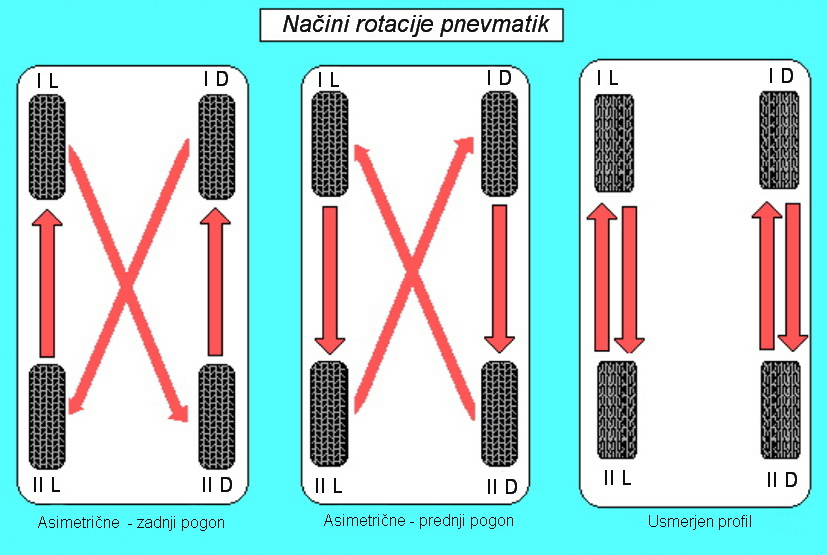 Read on to learn how to tell.
Read on to learn how to tell.
Read More
Tires
Firestone tires create a whole new driving experience. Learn about the technology of our tires that improves driving on straightaways and handling ability.
Read More
Tires
Tires are an investment & you want them to last. Here are some tire care tips to help you get the most out of your tires & info on our free inspection
Read More
LOAD 3 MORE
SHOWING 6 OF 12
Tires
Winter tires are your key to safe driving in the cold, but why? Stay informed to stay safe, with these 6 essential facts from Firestone Complete Auto Care.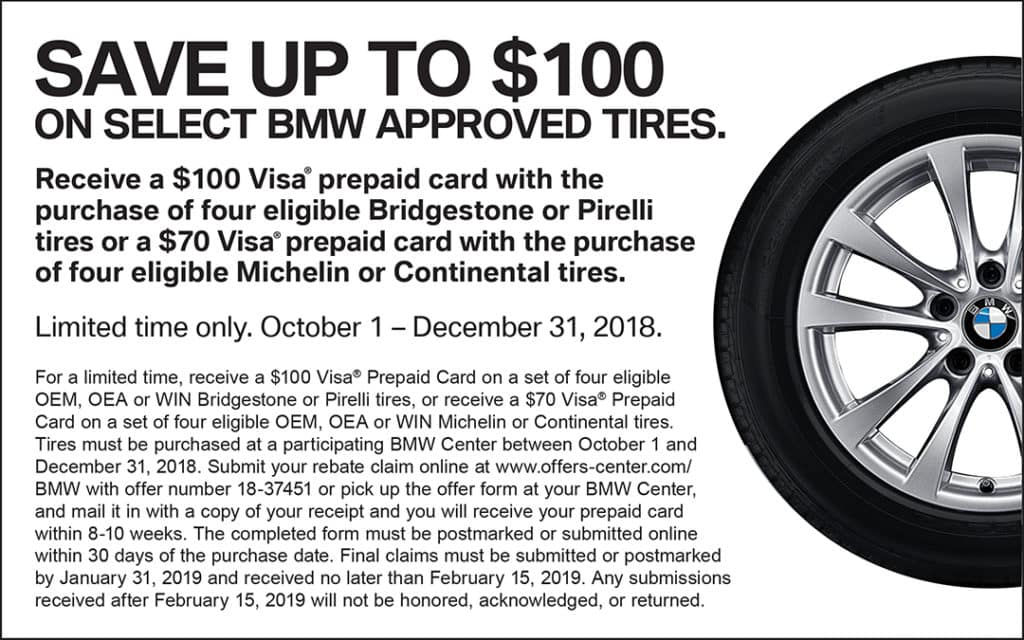
Read More
Tires
Here's what you need to know about changing out your tires for winter! Stay safe on the road and ahead of the winter rush with Firestone Complete Auto Care.
Read More
Tires
Yes, there is a right way to store tires! Help your tires live their longest life by following these easy storage steps, from Firestone Complete Auto Care.
Read More
{{storeNumber}}
{{storeName}}
{{link-icon "Call Us" mobileCallLink null "call-cta"}} {{link-icon "Directions" directions "_blank" "directions-cta"}}
{{address}}
{{city}}, {{state}} {{zip}}
{{#if activeFlag}} {{#ifCond mystore "or" myPreferredStore}} {{#ifCond storeType 'eq' "TPL"}}
*Call store for appointment {{phone}}
{{else}} {{#if onlineAppointmentActiveFlag }}
{{#if myPreferredStore}}
{{else}}
*Call store for appointment {{phone}}
{{/if}} {{/ifCond}} {{else}} {{#ifCond storeType 'eq' "TPL"}}
*Call store for appointment {{phone}}
{{else}}
Schedule Appointment {{#if onlineAppointmentActiveFlag}} {{else}}
*Call store for appointment {{phone}}
{{/if}}
{{/ifCond}} {{/ifCond}} {{else}}
*Temporarily Closed Due To: {{temporarilyClosedReason}}
{{/if}} {{#if isMilitaryStore}}
*This location is on an active US military base.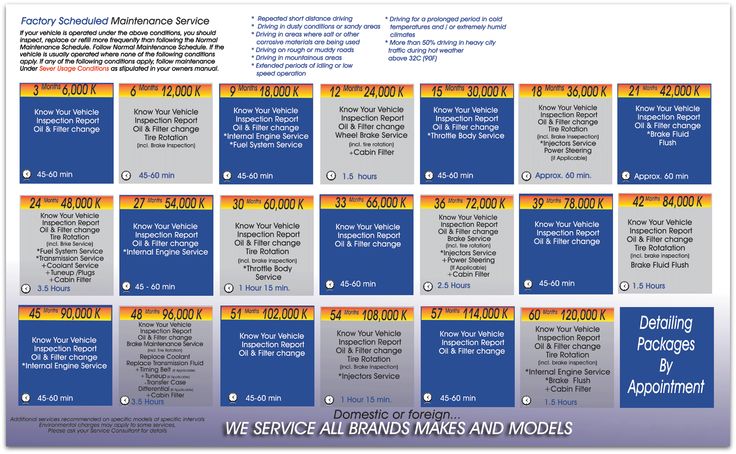 You may need military ID to access the location.
You may need military ID to access the location.
{{/if}}
{{#ifCond count 'eq' "3"}} Show More Stores {{/ifCond}}
Why should you get your tires rotated? Because it’s one of the easiest ways to extend the life of your tires and get the most miles out of them. And you only need to do it a couple of times a year.
Already know you need a tire rotation? Come visit us at one of our local stores or schedule an appointment.
Rotating the tires on your vehicle means moving them to different positions on your car or truck.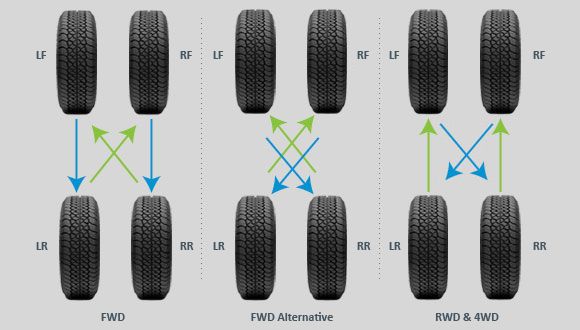 This helps promote even tread wear on all four tires.
This helps promote even tread wear on all four tires.
No matter how you drive, front and rear tires can wear at different rates. Tires that are mounted on the drive axle (the front two wheels on a front-wheel drive or back two on a rear-wheel drive) wear more quickly than the “free rolling” tires on the other axle.
Properly rotated tires can make for a smoother ride. It can also extend the life of your tires, saving you both time and money. By rotating your tires, you even out the wear to get the most tread life from every tire. Regular rotations are equally important, even if you have an all-wheel drive vehicle.
A good rule of thumb is every 5,000 miles. Depending on your vehicle, driving style, and tire type, you may need to rotate your tires more or less often. If you’re not sure, stop by Les Schwab. We’ll help you come up with a rotation schedule.
Regular tire rotations can help spot uneven tire wear early. Going too long between rotations may result in a wear pattern that can’t be fixed, no matter where the tire is moved on the vehicle. These wear patterns could result in the need for new tires sooner than expected.
These wear patterns could result in the need for new tires sooner than expected.
Here are some ways to remember your next rotation.
Getting your tires rotated every 5,000 miles is generally a pretty quick process. The professionals at Les Schwab will take the time to do a thorough tire rotation by also balancing your Les Schwab tires, checking your air pressure, doing a visual check of important safety systems, and documenting anything you should be aware of during the process. Once your vehicle is in our service bays, you can expect this procedure to be completed in about half an hour. Taking the time to make tire rotations a part of your normal vehicle maintenance regimen can add significant life to your tires, promote even tire wear for a smoother and more comfortable ride, and save you money in the long run.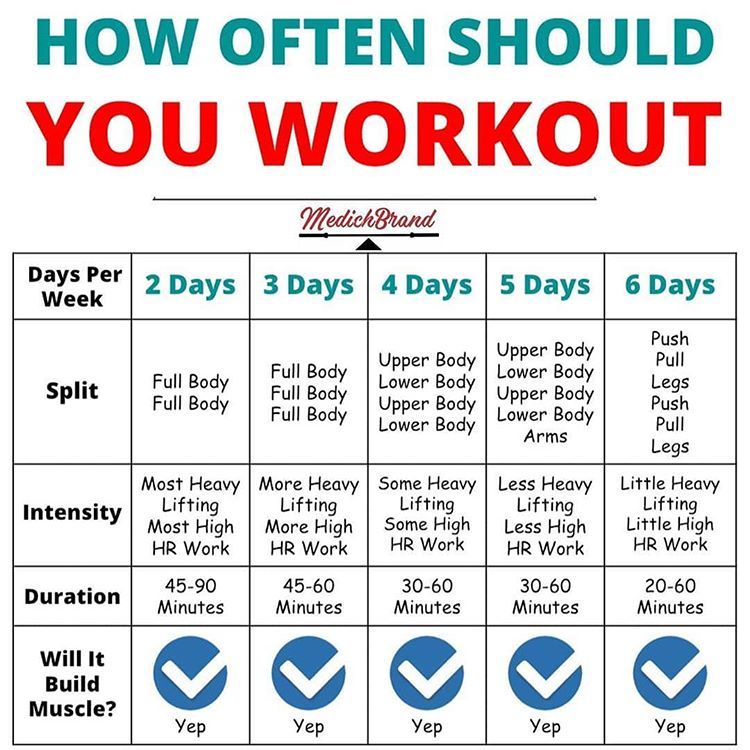
The standard tire rotation is front-to-rear, but there are multiple patterns that could also help promote long tire life.
Here’s what Les Schwab tire pros consider to properly rotate and position the tires on your vehicle.
As always, check your owner’s manual for specific recommendations from the manufacturer.
If you have Les Schwab tires on your vehicle, rotations are free for the life of those tires. Plus we balance your wheels as part of the service. Don’t have Les Schwab tires? Our pros can still help maximize the life of your tires. Stop by your local Les Schwab for a quick estimate.
Don’t put tire rotations off. This simple task can maximize the life of your tires. When you buy tires from Les Schwab, we rotate them for free on most vehicles. Plus, we provide free rotation reminders by email. Just ask at your local store.
Just ask at your local store.
Contents:
Wheel rotation is like a physical exercise. Everyone knows to do it, but getting yourself to actually do it can be a challenge. While we can't really help you with fitness motivation, we have plenty of good reasons why you should swap tires every 5,000-13,000 miles.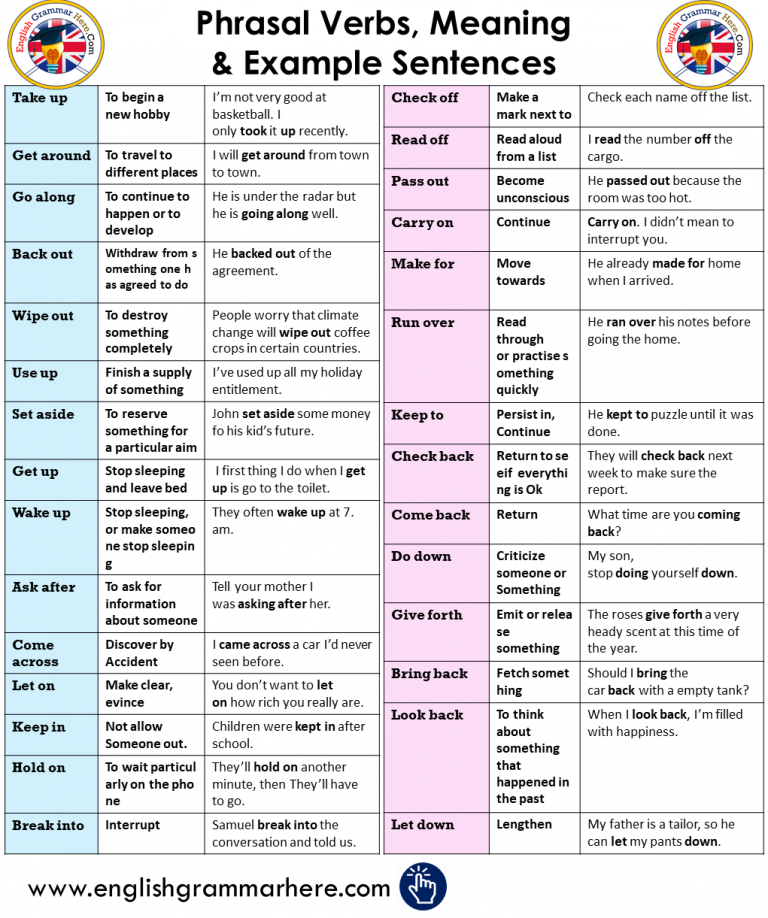 nine0003
nine0003
Tire wear is inevitable when using a car. The location and extent of wear on a tire's contact patch depends on many factors, including the position of the tire on the vehicle. Keep in mind that each axle of a vehicle faces a different external force. For example, the front tires on a front wheel drive vehicle are regularly subjected to more intense stress than the rear tires. Thus, front tires on a front wheel drive vehicle typically experience accelerated wear compared to front tires on a rear or all wheel drive vehicle. Changing the wheels helps even out the wear on all four tires. If you leave the front tires uninterleaved on a front wheel drive car, they will wear out faster than the rears. Without a proper check, you will end up with two front tires almost or completely at their maximum tread wear, and two rear tires with life remaining. nine0003 Tire rotation helps to avoid uneven wear
As a result, you will have to replace some tires prematurely. In some cases, while some of your tires may technically retain their remaining life, it will no longer make sense to pair them with any new tires with unworn tread. So you have to throw away not only worn tires, but also tires with remaining service life!
In some cases, while some of your tires may technically retain their remaining life, it will no longer make sense to pair them with any new tires with unworn tread. So you have to throw away not only worn tires, but also tires with remaining service life!
See also: Tire grip coefficient and factors affecting it
Summarizing all of the above, we can list the main reasons for rearranging tires in places:
Tires are absolutely essential to the efficiency and safety of a vehicle. Keeping your tires in good condition with rotation and other simple maintenance will help keep them wearing evenly which directly affects your vehicle's stability, driving predictability and makes it easier to maneuver safely throughout the life of your tires. Tires in poor condition can cause the vehicle to vibrate. nine0003
Remember: uneven tire wear can also affect the stability and handling of your vehicle. Swapping wheels is not only financially sensible, but it also helps to ensure the safety of your driving.
Swapping wheels is not only financially sensible, but it also helps to ensure the safety of your driving.
If tires are not rotated and maintained properly, you will likely lose not just a few hundred miles of their life, but thousands. The life of a tire can literally be cut off in the middle if you do not follow the rules for their alternation and do not take other necessary measures for their maintenance. nine0003
Tire manufacturers know that rotation is essential to realizing their full tire life. Tire mileage guarantees are most often set by tire manufacturers based on tire rotation. So if you never rotate tires and experience premature tire wear as a result, the manufacturer is unlikely to honor your warranty. In other words, you'll be left on your own with a prematurely worn set of tires and a much more expensive replacement bill. nine0003
nine0003
See also: Inflating tires with nitrogen - the pros and cons. What does filling tires with nitrogen give?
The good news is it's inexpensive. That small investment comes back to you in the form of long tire life and sustained vehicle safety and performance. In the long run, the cost of periodic tire rotation will be only a fraction of the amount you have to spend on buying new tires due to premature tire wear. It is also not uncommon for tire shops to offer discounted tire rotation services for regular customers, or from time to time offer to do it for free. So contact the tire shop that installed your tires first - in some cases, your tire rotation costs may be zero. nine0003
Helpful Hint: don't forget to label the wheels with the numbers and keep the tire rotation data and receipts. If you ever need to change tires under warranty, having these records will increase your chances of success.
Are you used to doing everything yourself? Then you can rearrange the tires. If you can safely lift the car and remove the wheels, you can change the tires in your garage or on your driveway. In addition to the rearrangement pattern, you need to consider whether your tires are directional or non-directional, symmetrical or asymmetrical, and whether the tire pattern is staggered or square. If you are not sure about at least one of these points, it is better to entrust the work to a professional. Also consider that it is a smart move to put your tires in the hands of a competent professional from time to time. Tire specialists monitor their potential problems, identify misalignment and other issues that can affect tire condition/wear and vehicle performance. nine0003
For non-directional tires of the same size, you can use the diagonal swap pattern or move the front tires to the rear diagonal corner and the rear tires forward on the same side.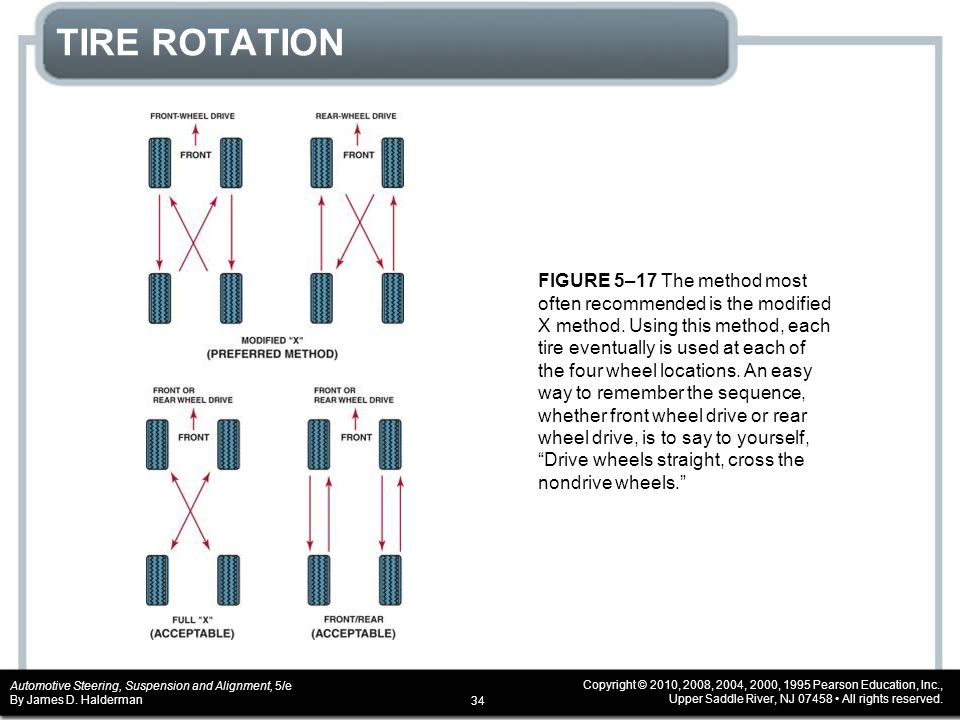
Also, due to the availability of modern tires, there is a need for 2 more rotation schemes:
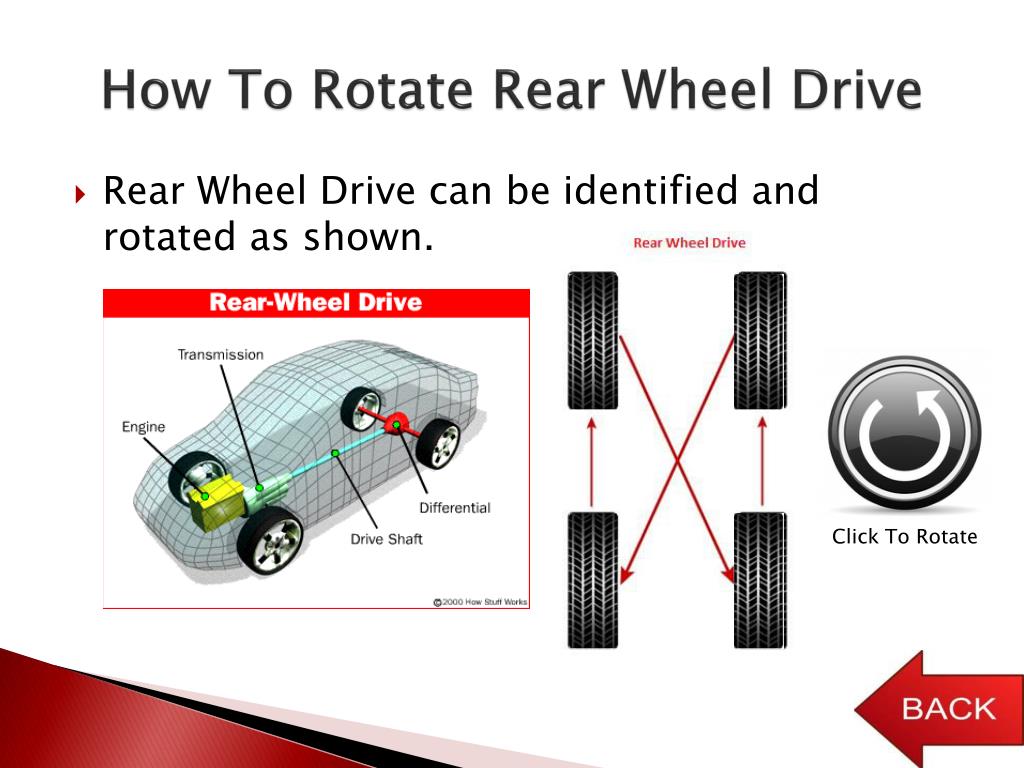 If you have a full-size spare tire, it should also be included in the swap plan. nine0003
If you have a full-size spare tire, it should also be included in the swap plan. nine0003 tire shift diagram for 4WD and 4WD vehicles Vehicles with dual rear wheels and non-directional tires may use one of the following rotation patterns: nine0003
Winter and studded tires also need to be rearranged so that they serve for a long time and behave adequately on the road. For winter wheels, the rearrangement should be done more often, about once every 6000 km or once a season, whichever comes first. nine0003
For winter wheels, the rearrangement should be done more often, about once every 6000 km or once a season, whichever comes first. nine0003
Important: The direction of rotation for studded tires must never be reversed when changing!
See also: How to properly store winter tires? Can tires be stored on the balcony?
Tire rotation helps maintain your vehicle's performance and safety, extends tire life, saves you money, and gives you a good reputation with the tire manufacturer should you ever have tire problems or warranty claims. nine0003
Find out how to maintain your vehicle. For most vehicles, under normal driving conditions, the standard tire rotation interval is approximately every 8,000 to 13,000 km.
Many people read about rearranging tires along the axles in old textbooks for drivers. But in modern operation, off-season tire changes are almost never found. Why rotate wheels today and when?
Why rotate wheels today and when?
Swapping tires and changing them between axles is designed to equalize the degree of wear of all tires and extend the life of your vehicle's wheels.
Therefore, it is recommended to change the tires periodically from the rear axle to the front axle and vice versa. Too often, this procedure is also not worth doing. It is enough for to rotate every 8-10 thousand km.
If you regularly operate the vehicle at full load and at high speeds, then with such an aggressive mode it is better to change shoes every 5-6 thousand km.
For motorists who average 15-20 thousand km per year there is no need to change the position of tires in the middle of summer or winter. Just remember which tire was on the front and rear axles, and at the next seasonal change, install them with "offset" (swap the axles of their installation).
In order not to forget the position, sign the old position on the side of the wheel with a special wax marker. Some tires also have special fields for this marking. nine0003
If you notice that the tires begin to wear unevenly, the outer or inner side of the tread wears out faster, then is recommended to be replaced before . Also in parallel with this, you need to check the alignment.
1. Tread pattern pattern. Many modern tires have a directional tread pattern. In order not to reduce the efficiency of the tire and not worsen the handling of the car, when rotating the wheels, it is recommended to carefully monitor the direction of the wheel rolling, which is marked on the sidewall of the tire with a special arrow. nine0003
nine0003
2. Balancing. When swapping wheels, it is recommended to check their balance and, if necessary, change the value of the weights. Unbalanced wheels wear out faster and negatively affect the resource of steering elements.
3. Tire size. When changing tires along the axles, you need to remember that on some machines the width and height of the profile of the front and rear wheels may differ.
Tires of various sizes are found on electric vehicles, compact city cars, and sports cars. nine0003
To change the tires along the axles, you can use the services of a tire fitting or a comprehensive car service. But in good weather, you can simply rearrange the wheels yourself, you just need to use a serviceable tool and perform all the operations correctly: install a jack, do not forget about the stops under the wheels, and so on.
There are several wheel rotation patterns.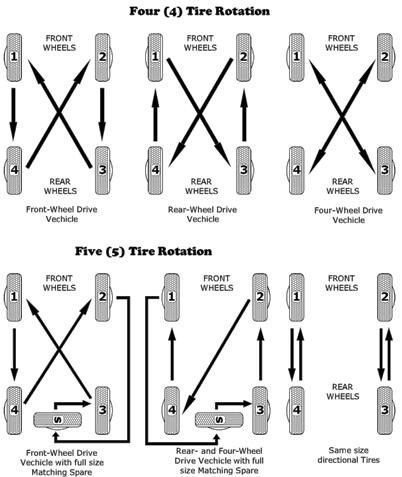 The most popular option is cross scheme , when the front left wheel becomes the rear right and vice versa, and the front right is set to the left rear and also vice versa.
The most popular option is cross scheme , when the front left wheel becomes the rear right and vice versa, and the front right is set to the left rear and also vice versa.
This circuit is universal, will fit vehicles with any type of drive .
On machines with rear and all wheel drive , it is recommended to use a scheme in which the rear wheels become front diagonally , and the front wheels rear, but without changing sides.
If your vehicle is fitted with directional tires, the only operating pattern for them is swapping front and rear wheels without changing sides .
Of course, it is recommended to swap tires of different sizes only within the same axle.
Also available with spare wheel included in the rotation scheme. As a rule, all options using five wheels are described in the vehicle manual. But remember that on most new cars, the role of a spare tire is performed by a narrow "reserve", on which both the maximum speed and mileage are significantly limited. In addition, often a spare tire, even on a car from a car dealership, is installed of a different brand and model than those in which the four main wheels are shod. Because changing wheels, taking into account the "reserve" requires accuracy .
In addition, often a spare tire, even on a car from a car dealership, is installed of a different brand and model than those in which the four main wheels are shod. Because changing wheels, taking into account the "reserve" requires accuracy .
It is recommended to change truck tires every 40-45 thousand kilometers or in case of unequal or/and uneven tread wear. Rotation saves your changeover budget by wearing all tires evenly. This is especially important in cargo transportation, where the cost per kilometer (CPC) is taken into account.
UPC = (Tire Cost + Maintenance - Carcass Price) ÷ Mileage (km). nine0163
When planning, consider:
If we consider the load of the axles, then in the three-axle trailer the third axle experiences the greatest load , the second axle the smallest .